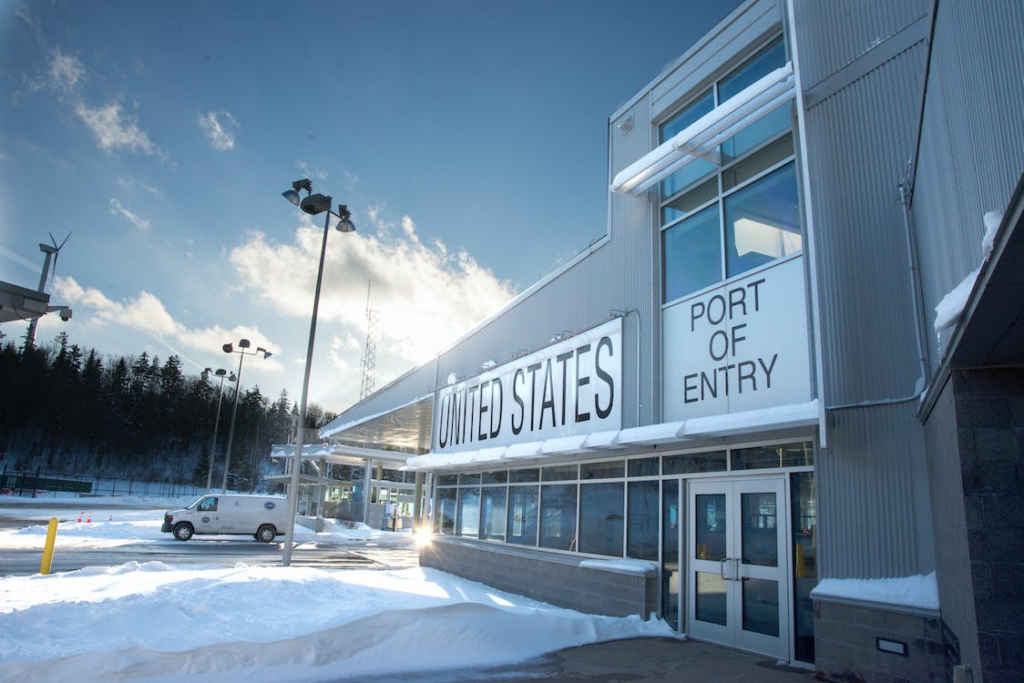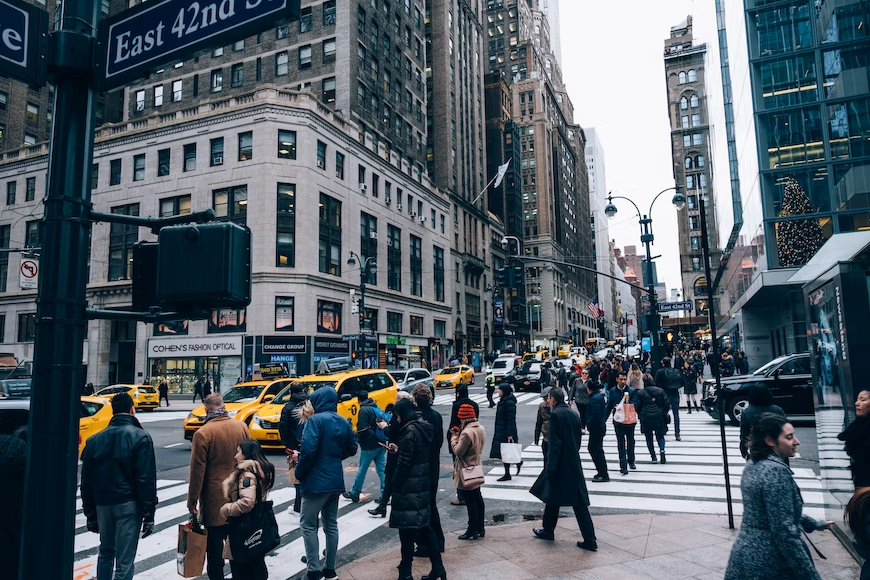Understanding US immigration issues: A comprehensive guide for Filipinos
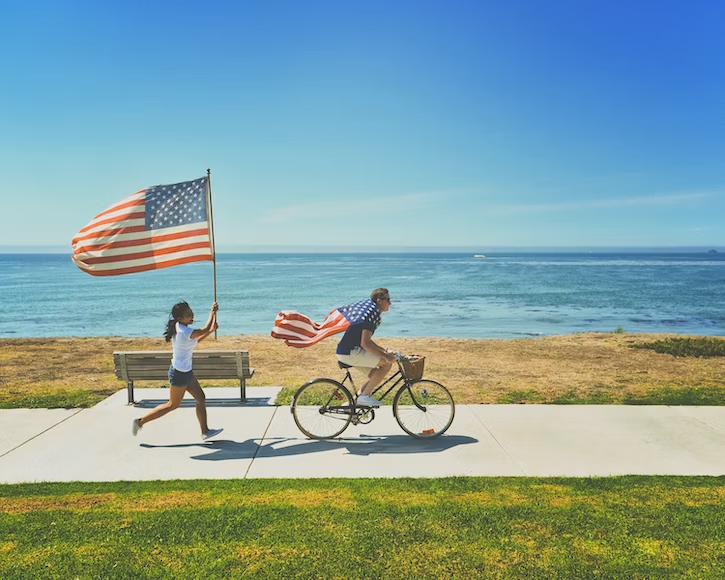
The US has been a prime destination for many Filipinos but US immigration usually remains a barrier
Disclaimer: The information provided in this guide is for general reference only and should not be considered legal advice. Immigration laws and policies are subject to change, so it’s essential to consult with a qualified immigration attorney for personalized guidance.
Hey there, fellow Filipinos. Are you feeling that rush of excitement as you imagine yourself strolling along the beaches of California or walking through the streets of New York City?
It’s time to embrace the dream of a lifetime—a life in the land of the free, the United States of America. Whether you’re planning to pursue higher education, embark on a fulfilling career, reunite with your loved ones, or explore the American heartlands, the journey of US immigration awaits you with open arms.
But we understand that this journey may have its twists, turns, and moments of uncertainty. But worry not, we are here to be your navigators and companions on this adventure, guiding you through the intricacies of US immigration with the warmth of a long-lost friend.
So, grab a cup of halo-halo, sit back, and get ready to embark on this transformative odyssey as we present you with a comprehensive guide that will illuminate the path to your American dream.
The American Dream at a glance
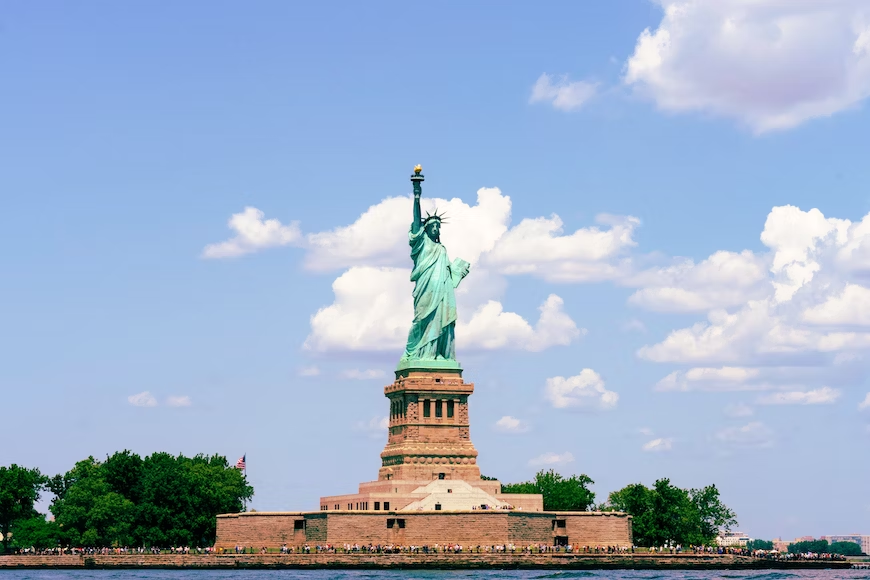
As the saying goes, if you can make it in New York City, you can make it anywhere
Ah, America—the land of opportunities, Hollywood, and burgers. It’s no wonder many Filipinos dream of crossing oceans to set foot on this promising land.
However, understanding US immigration can be as perplexing as trying to figure out why jeepneys have colorful designs. From visas to green cards, we’ll demystify the process so you can commence your American adventure with confidence.
You may also like: US citizenship test changes are coming, raising concerns for those with low English skills
Understanding US immigration
Changes in US immigration policies have kept the American Dream as just that—a dreamUS immigration is the process of entering and residing in the United States legally. It involves obtaining various visas and, for some individuals, acquiring that elusive green card, which is a gateway to permanent residency. But for many Filipinos, it signifies much more than just legal status; it’s about fulfilling dreams and providing a better future for their families.
The significance of US immigration for Filipinos
For generations, Filipinos have sought opportunities abroad, and the US has been a prime destination. From nurses and teachers to engineers and artists, Filipinos have made significant contributions to American society. However, the journey isn’t always a walk in the park. Recent changes in US immigration policies have presented challenges for many. And for most of them, the American Dream continues to be a dream.
What are the changes in US immigration policies?
As COVID-19 struck the United States, the US immigration system faced unprecedented disruptions and changes that significantly impacted both noncitizens and the nation’s immigration landscape. Let’s take a look at some of the changes in US immigration after the pandemic:
Surge in immigration activity
Over the last two years, there has been a surge in immigration activity at the US-Mexico border. The government then increased resources dedicated to border security. However, the situation remains challenging, with federal, state, and local law enforcement often overwhelmed as they try to process surges of migrants.
Focus on border policy
2023 has become crucial for shaping the US border policy. A major Supreme Court decision on a controversial pandemic-era immigration rule is pending, and the House of Representatives looks to hold tough hearings that may result in more drastic actions.
Immigration rebound and labor shortage
The flow of immigrants and refugees into the United States has increased over the past year, helping to replenish the American labor force after a decline that began with restrictions, which the pandemic also compounded. This influx of immigrants has contributed to the rebounding economy but visa backlogs remain a concern.
After the World Health Organization declared that the COVID-19 as a public health emergency has ended, the new normal has become a permanent part of society. But as the period has seen changes in various immigration policies and an increased focus on border management, comprehensive immigration reform remains a challenge for the government.
Popular US visa types for Filipinos
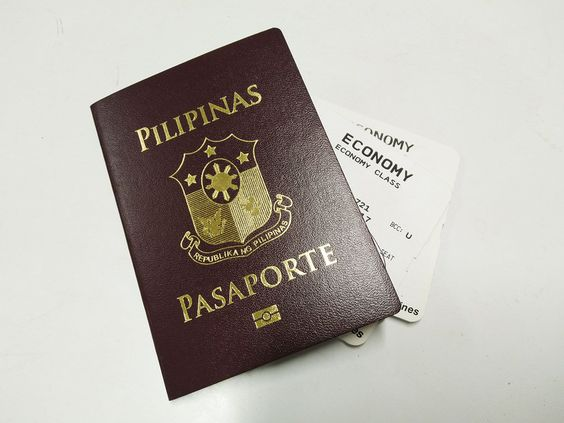
The path to the American Dream starts with knowing what visa applies to the individual
Despite the potential hurdles caused by the current US immigration policies, this should not deter anyone from achieving their dream. In this section, let’s look at the different visas available to immigrants.
B-1 and B-2 visas: The tourist duo
Are you planning to visit Disneyland, stroll along Times Square, or marvel at the Grand Canyon? The B-1 (Business) and B-2 (Tourist) visas are your gateway to explore the beauty and opportunities in the US. These non-immigrant visas allow you to temporarily enter the country for business, pleasure, or medical treatment. However, you must demonstrate strong ties to the Philippines and the intent to return after your visit.
F-1 visa: Fulfilling your academic dreams
The F-1 visa is a stepping stone for Filipino students aspiring to study at US universities and colleges. Whether you’re pursuing a degree in rocket science or culinary arts, this visa gives you the opportunity to immerse yourself in a world-class education system and soak in the American college experience.
H-1B visa: The path to professional opportunities
If you possess specialized skills and are eyeing a professional career in the US, the H-1B visa could be your ticket. This non-immigrant visa allows US companies to employ foreign workers in specialty occupations like IT, engineering, or healthcare.
K-1 visa: Love knows no boundaries
The K-1 visa, also known as the fiancé(e) visa, is for Filipino citizens engaged to US citizens. It allows you to enter the US and get married within 90 days of arrival.
CR-1 visa: Reuniting with your American spouse
Love knows no distance, and the CR-1 visa is testament to that. If you’re already married to a US citizen and wish to join your spouse in the US, this visa can help you reunite with your better half.
You may also like: US Presidential Panel Grants Approval for Recapturing Unused Green Cards
IR-5 visa: Embracing family ties
Family is at the heart of Filipino culture, and the IR-5 visa celebrates this cherished value. If you have a US citizen child who is over 21 or a sibling who’s already a US citizen, you may be eligible for the IR-5 visa, which grants you the chance to live with your loved ones in the US.
The green card journey
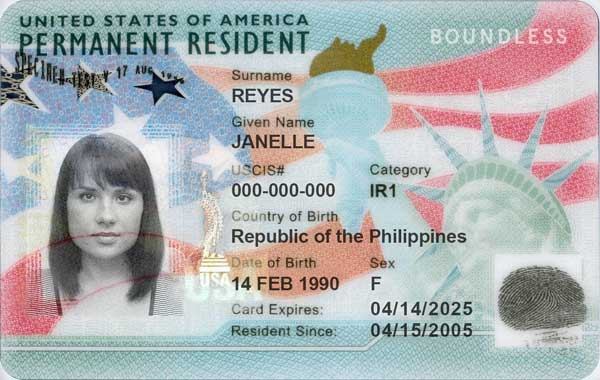
A green card opens up a plethora of opportunities for its holder
The green card is a symbol of lawful permanent residency in the US. It’s like holding a golden ticket that allows you to live and work in the country indefinitely. Obtaining a green card can be a life-changing moment. Fortunately, there are various paths to acquiring one, each with its own set of requirements and waiting periods.
Family-sponsored green cards
For those with immediate family members who are US citizens or green card holders, the family-sponsored green card offers a glimmer of hope. This visa category allows eligible Filipinos to join their loved ones in the US and build a future together.
Employment-based green cards
If you possess extraordinary skills, are a priority worker, or have an employer willing to sponsor your journey, the employment-based green card could be for you. This route is your “balikbayan box” full of opportunities, allowing you to work and live in the US based on your professional achievements.
Diversity visa lottery
The diversity visa lottery, also known as the green card lottery, offers Filipinos a chance to win a green card through a random selection process. It’s like joining a raffle draw for a lifetime of opportunities—although the odds are slim.
Asylum and refugee status
For those seeking safety and protection, the US also grants asylum and refugee status. If you fear persecution in your home country due to race, religion, nationality, political opinion, or membership in a particular social group, this avenue provides a chance to start anew in a place that values freedom and diversity.
Preparing your US visa application

Make sure you fill out your visa application form properly
Gathering the necessary documents for your US visa application is a meticulous process. It’s essential to have your passport, application form, supporting documents, and receipts in order to present a strong case to the US embassy or consulate.
Follow these steps to help you prepare for your visa application:
Step 1: Fill out Form DS-160
The DS-160 form is like an introduction letter to the US embassy, providing essential information about you and your purpose for visiting the US. Approach it with the same enthusiasm and be as detailed as possible.
Step 2: Pay the visa fees
Fees are an inevitable part of any visa application process. Make sure to pay them promptly and keep the receipts. A little financial preparation goes a long way in your quest of the American Dream.
Step 3: Schedule visa interviews
The visa interview is your chance to shine and convince US officials that you’re a genuine traveler with no other intentions. Dress to impress, prepare for potential questions, and present your case confidently. Remember, you’re not just a visa applicant—you’re an individual with a unique story and dreams to share.
Tips for a successful US visa interview

During the US visa interview, confidence is key
A US visa interview is your opportunity to show how eager you are with your goals. You want to show that you qualify entry into the US, on top of accomplishing all other requirements. Success isn’t guaranteed, but with these tips, you might up your chances.
Know your purpose
“Why do you want to visit the US?” is the first question you’ll hear most of the time. Knowing your purpose allows you to articulate it clearly to the officer. If you’re visiting, tell them where you’ll go. Or if you’re going there to work, make sure you’ve secured your employer’s sponsorship.
Be confident and truthful
Confidence is key to success, like the unwavering confidence of Filipino beauty queens in international pageants. Be honest and don’t provide false information.
You may also like: Singapore dethrones Japan as the most powerful passport. What about the Philippines?
Prepare for potential questions
Anticipate common visa interview questions and practice your responses. Some questions you might have to answer include the following:
- Have you ever been to the United States?
- Are you looking to travel with someone? Are you traveling alone?
- Tell us something about the company for whom you’ll be working
Remember that these questions aren’t set in stone. The US embassy might ask you other questions, which might give you the chance to tell the story of how you met your spouse. And most importantly, just like studying for exams, preparation increases your chances of success.
Ready your supporting documents
Organize your supporting documents and keep them accessible during the interview. If possible, keep all your documents in a binder. That way, you won’t have to sift through a myriad documents while you’re face to face with the visa officer. Being prepared also gives you brownie points, showing how serious you are about your application.
Dress to impress
First impressions matter, and dressing appropriately for your visa interview is a must. Avoid wearing “pambahay” attire. Think of it like an interview, but you don’t want to overdress. Generally speaking, dress like you’re attending a family gathering—neat and respectful.
Overcoming US immigration challenges
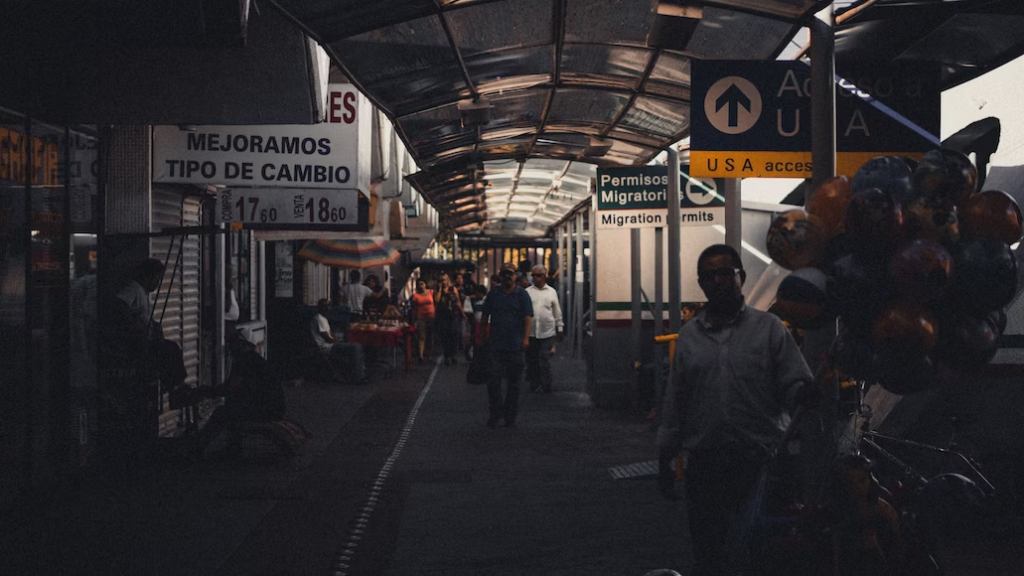
Overstaying in the United States can lead to future immigration problems
While the US offers many opportunities, overstaying your visa is a serious offense. It can lead to future immigration problems and even a ban from reentering the US. Respect the terms of your visa and ensure you depart the country before it expires.
Dealing with visa denials
Facing a visa denial can be disheartening. But don’t lose hope. Seek feedback, identify areas of improvement, and reapply with a stronger case.
Seeking legal assistance
If you find yourself navigating through the complexities of US immigration and feel like you’re stuck, consider seeking legal advice. Immigration attorneys can provide valuable guidance and increase your chances of a successful application.
Common US immigration issues for Filipinos
Navigating the US immigration process can be like solving a challenging puzzle: There are many pieces that need to fall into place. As much as many want to make the journey smoother, many Filipinos often encounter several common issues during the immigration process. In this section, we’ll examine these challenges and shed light on their implications.
Visa denials: A heartbreaking roadblock
One of the most disheartening experiences for Filipino immigrants is facing a visa denial. Despite meticulous preparation, sometimes the dream of setting foot on American soil remains elusive. Whether it’s a tourist visa or a work visa, denials can be emotionally overwhelming.
What does a visa denial imply?
Visa denials can have significant consequences, such as delayed travel plans, financial losses, and dashed hopes. Moreover, multiple visa denials might lead to skepticism from immigration authorities in future applications, making it harder to obtain approval for subsequent attempts.
Long waiting times: The test of patience
Getting a denial is one thing, but enduring long waiting times during the immigration process is another challenge altogether. Filipinos seeking green cards or family-sponsored visas often experience frustratingly long processing times, which can test their patience and resilience.
What do long waiting times imply?
Prolonged waiting times can impact life plans, career decisions, and family reunification. For instance, a Filipino professional aiming for an employment-based green card might face employment challenges if they’re stuck in the waiting period, leading to frustration and uncertainty.
Immigration backlogs: Waiting in line for hope
Filipino immigrants often find themselves entangled in immigration backlogs. These occur when the demand for visas exceeds the available quota, resulting in extended processing times.
What are the implications of immigration backlogs?
Immigration backlogs can cause significant emotional and financial strain, with families separated across borders for extended periods. For instance, a Filipino married to a US citizen might endure a lengthy wait for their CR-1 visa, straining their relationship and affecting family dynamics.
Immigration policy changes: A shifting landscape
The US immigration landscape can change like the tide, with policy shifts affecting the eligibility criteria and application processes. Filipino immigrants must stay abreast of these changes so they can adapt as necessary.
What are the implications of immigration policy xhanges?
Immigration policy changes can lead to confusion and uncertainty, leaving applicants to adapt quickly to new requirements and regulations. For example, a Filipino professional hoping to apply for an H-1B visa might face challenges if the eligibility criteria change suddenly, affecting career plans and opportunities.
Life in the USA: A snapshot for Filipinos
Adjusting to life in the US can be like mixing adobo with hotdogs. Embrace the differences, make new friends, and immerse yourself in the diverse American society.
Navigating the American education system
For those studying in the US, the education system may differ from what you’re used to. Seek support from your school and fellow students. Some colleges and universities have dedicated departments that help immigrants acclimate to their surroundings.
Healthcare and insurance matters
Understanding the US healthcare system can be intimidating to immigrants. Needless to say, you must prioritize your health, obtain health insurance, and familiarize yourself with healthcare resources.
Working in the USA
The US job market is vast and dynamic, offering opportunities in various fields. Prepare an impressive resume, network actively, and be persistent in your job search.
Maintaining your US status
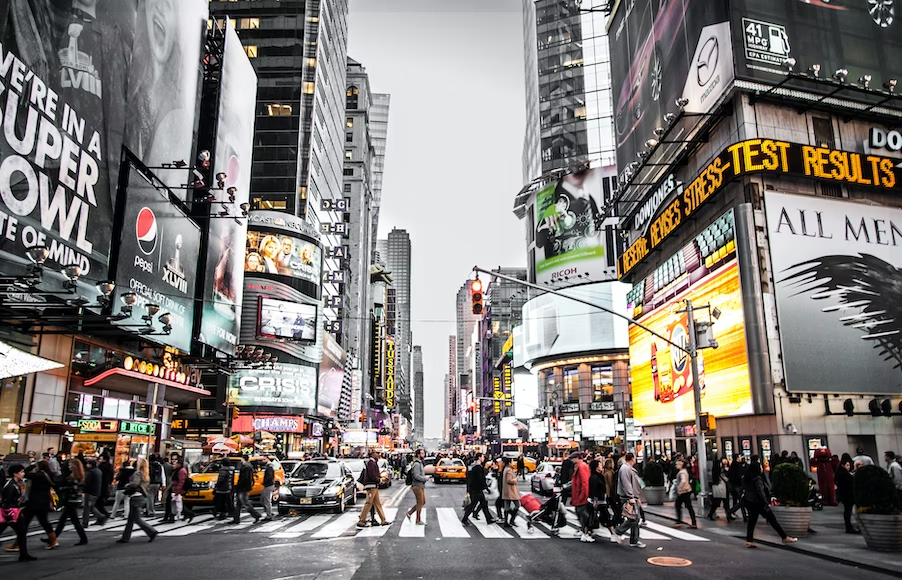
To maintain your legal status, adhere to the country’s rules and regulations
Once you’re in the US, adhere to the terms of your visa like you would to traffic rules. Comply with the rules and regulations to maintain your legal status.
Extending your stay or changing visas
If your circumstances change or you wish to extend your stay in the US, explore the options available. Like choosing from a menu of Filipino delicacies, determine the best path for your situation.
The road to US citizenship
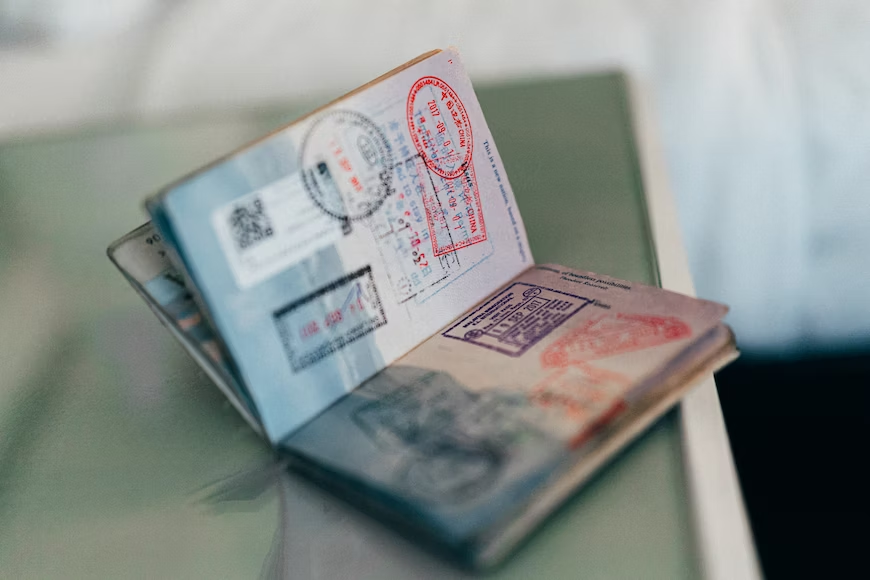
The Philippines allows dual citizenship so you can embrace the best of both worlds
Becoming a US citizen is a huge milestone in every immigrant’s journey. The naturalization process involves meeting specific criteria, demonstrating English proficiency, and passing a civics test. It’s a testament to your commitment to becoming an American citizen.
If you’re worried about your Filipino citizenship, the Philippines allows dual citizenship. This policy enables you to retain your Filipino citizenship while being a US citizen.
Returning to the Philippines: A reverse culture shock
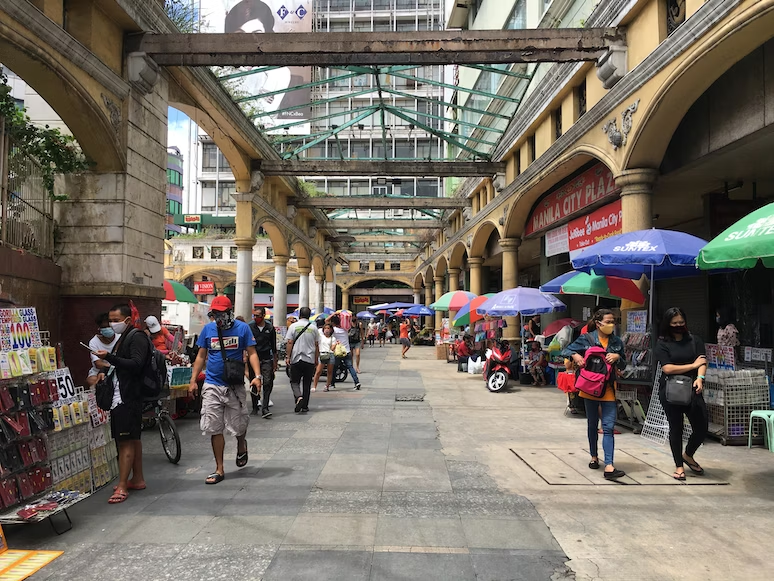
Returning to the Philippines might entail some adjustments
Just as you adapted to life in the US, transitioning back to the Philippines can be challenging. Give yourself time to adjust to ease into the rhythm of everyday Filipino life. Of course, your time in the US has likely broadened your horizons. You can apply the knowledge and experiences you gained in the US to make a positive impact back home.
Takeaways
In this comprehensive guide, we embarked on an exciting journey, exploring US immigration issues faced by Filipinos. Visa denials, long waiting times, immigration backlogs, and policy changes are all common challenges that can arise during the immigration process.
While the path to the American Dream may have its obstacles, it is crucial to stay informed, seek assistance when needed, and approach the process with determination. Armed with this knowledge, approach your US immigration journey with confidence.
Your top US immigration questions, answered
Can I work in the US with a tourist visa?
No, tourist visas (B-1/B-2) strictly prohibit employment. Engaging in unauthorized work may lead to serious consequences.
How long does it take to get a green card through marriage?
The timeline varies based on factors such as visa category, backlog, and processing times. On average, it can take several months to a few years.
Is the diversity visa lottery a guaranteed way to get a green card?
Unfortunately, no. The diversity visa lottery is a random selection process, and the number of applicants far exceeds the available visas.
Can I apply for US citizenship if I am still a dual citizen?
Yes, the US recognizes dual citizenship, allowing you to become a US citizen while retaining your Filipino citizenship.
What should I do if my US visa application is denied?
If your visa is denied, don’t lose hope. Seek feedback, address any issues, and reapply with stronger evidence.

